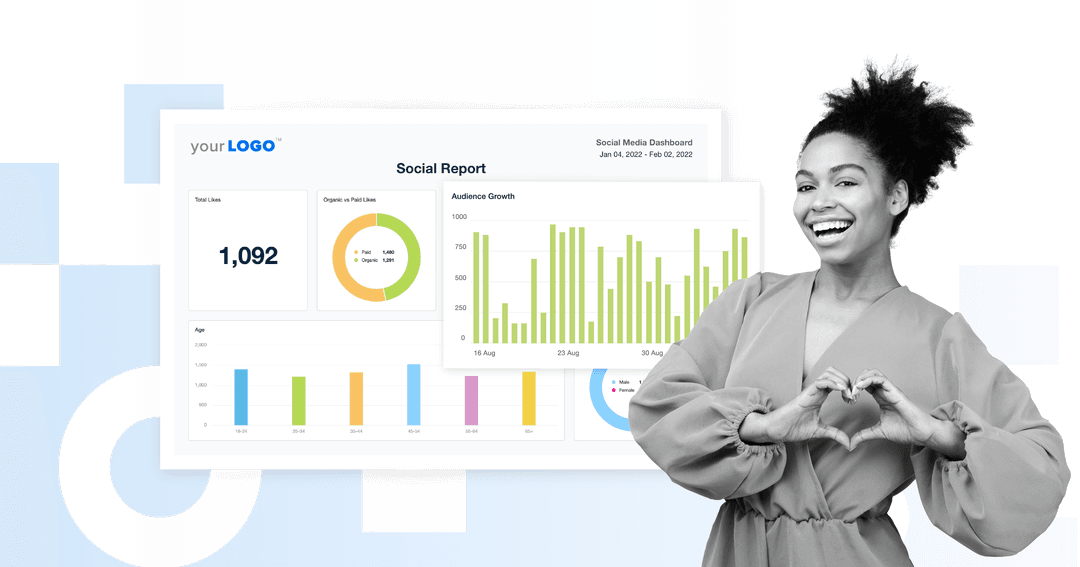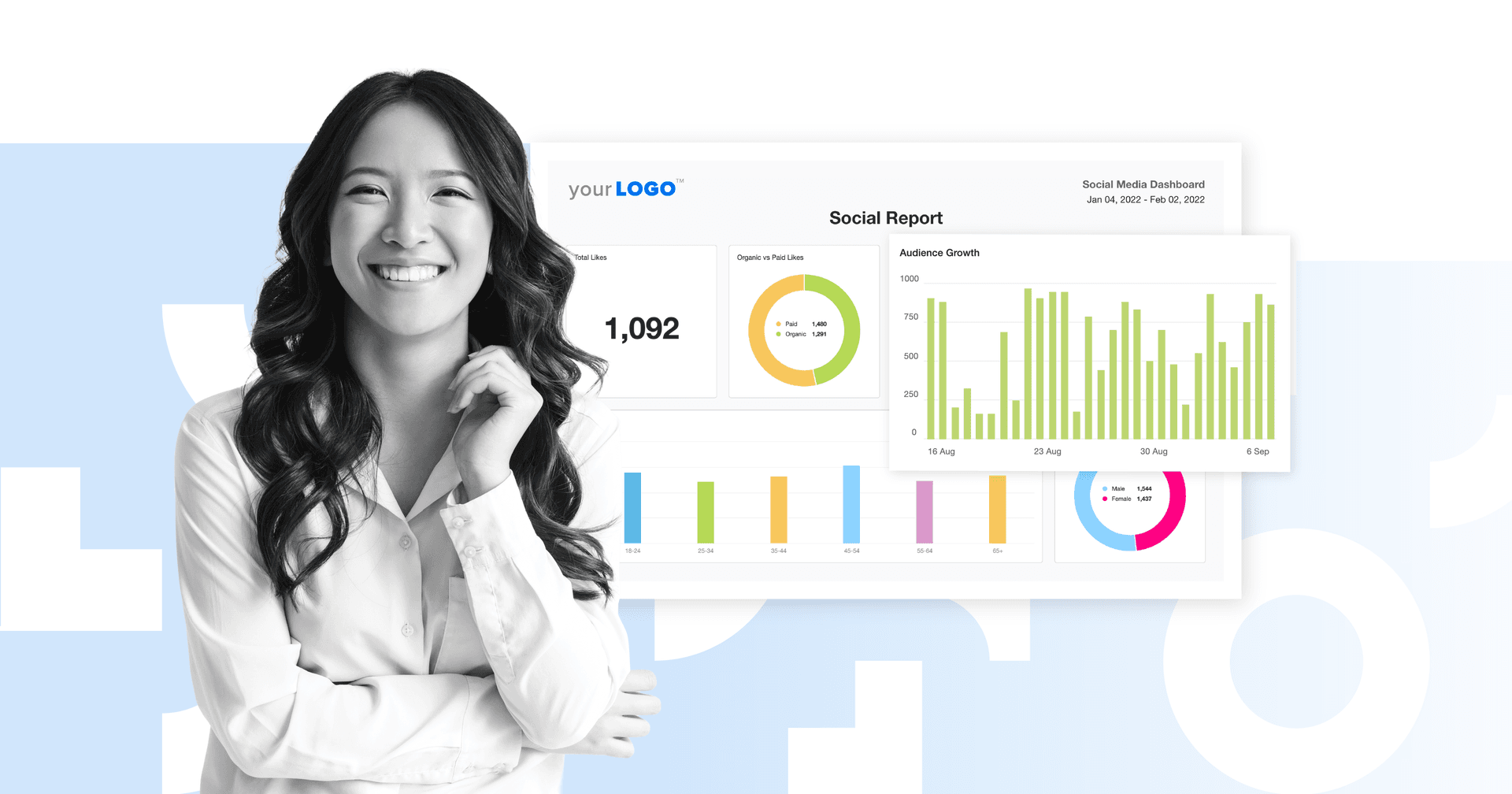Table of Contents
Table of Contents
- What Is Influencer Marketing and Is It Still Worth It in 2025?
- Perks of Working With Influencers
- Drawbacks of Working With Influencers
- New Influencer Marketing Trends for 2025
- How To Measure Influencer Marketing Success
- Influencer Marketing Mistakes To Avoid
- Final Thoughts: Influencer Marketing Is More Than a Fad
7,000+ agencies have ditched manual reports. You can too.
Free 14-Day TrialQUICK SUMMARY:
Influencer marketing trends are all the rage. Marketing agencies are hopping on these trends by partnering with social media influencers to boost brand visibility and engagement. Key trends for 2025 include the use of nano and micro-influencers, increased use of AI influencers, and more traction for influencer B2B campaigns. This guide covers these trends and offers best practices for creating effective influencer marketing strategies, leveraging insights from Emily Carpenter, Director of Marketing for the marketing agency Digital Retail Partners.
Influencer marketing is like having a friend who's really good at recommending things.
We all have one of those: They’re trying the latest beauty brand, have impeccable taste in music, and will give you the perfect book recommendation for just about any topic that pops up in conversation. That’s exactly what makes influencer marketing so powerful. It taps into that same sense of trust, relatability, and social proof—only at scale.
Influencer marketing isn’t limited to celebrities with millions of followers anymore, either. Today, it’s becoming a space where smaller influencers are gaining more traction, building tight-knit communities, and having their voices amplified. Users (and algorithms) are also favoring authenticity instead of polished, overly-produced content.
Needless to say, the definition of influence itself is changing. Therefore, agencies that understand the latest influencer marketing trends will be better positioned to craft content that feels organic, all while delivering stronger ROI.
Ready to up the influencer marketing game for your clients? In this article, we’ll explore emerging trends for 2025 and how agencies should use these insights to create more impactful influencer campaigns.
What Is Influencer Marketing and Is It Still Worth It in 2025?
Influencer marketing reaches audiences via individuals who command a significant following on social media platforms. It's about leveraging the trust and credibility these influencers have built with their audience to advocate for a brand, share its messages, and endorse products or services. Think of it as a modern twist on word-of-mouth advertising, supercharged by the digital age's connectivity and scale.
For a marketing agency, this means identifying and collaborating with influencers whose brand, tone, and audience align with your client's targets. The goal is to craft authentic narratives that highlight your client's offerings and fit seamlessly into the influencer's content stream. That way, the promotion feels natural and genuine to the audience.
Emily Carpenter understands full-well the power of partnering with influencers. Before becoming Director of Marketing for Digital Retail Partners, an integrated design and marketing agency, Carpenter worked for men’s custom clothing brand J.Hilburn.

Emily Carpenter, Director of Marketing for Digital Retail Partners.
In her role as a Marketing Specialist for the clothing brand, she helped build a strategic partnership with Marcus Spears, ESPN analyst and former NFL player, who became a brand steward for J.Hilburn.
Carpenter has taken this partnership approach to DRP, where she pairs clients with influencers that match their marketing objectives.
Each campaign and client has very different budgets and goals for their influencer marketing. For our large clients, we use LTK to source influencers and creators that fit their specific demographic target, whether it be the income level of their audience or where they are located geographically. For the smaller clients, we source the old-fashioned way—hashtags and location tags. Audience information isn’t readily available when we source organically, but we get to start a conversation with them.
Emily Carpenter, Director of Marketing, Digital Retail Partners
As Emily shared, there’s good news: Whether your clients are big or small, there’s probably an influencer who matches their objectives—from brand building to sales-oriented sponsored ads.
6 Notable Influencer Marketing Statistics for 2025
Influencer marketing continues to have a tremendous impact. Here are some valuable insights to consider:
According to Internet Marketing Hub (IMH), the global market size for this industry is expected to reach $32.5 billion in 2025.
IMH reports that 75.9% of Instagram influencer partnerships were nano-influencers (i.e., creators with fewer than 10,000 followers).
In alignment with these trends, HubSpot predicts we’ll likely see more niche influencer partnerships in 2025.
Here’s an interesting twist: 86% of marketing leaders in this HubSpot study believe that AI-generated figures have the potential to replace human influencers by year-end.
According to AdWeek, there will likely be increased B2B influencer marketing campaigns on LinkedIn (especially since the platform has seen success with short-form videos).
Of all age groups, SurveyMonkey found that Gen Zers trust influencers the most. 58% of Gen Zers have also bought a product based on an influencer's recommendations.
As the stats show, the influencer creator economy shows no signs of slowing down. However, it’s changing—there’s more emphasis on authenticity, niche audiences, and multi-platform strategies than previous years.
Perks of Working With Influencers
The right influencers integrate brands seamlessly into their content, making promotions feel authentic. Here are some benefits of choosing well-aligned partnerships.
Increased Credibility
Influencers, with their built-in trust and rapport with followers, offer something traditional ads cannot: Credibility. When an influencer endorses a product, their followers take note, much like they would with a recommendation from a friend.
Precision Targeting
By collaborating with influencers whose audience closely matches a client’s target market, agencies will ensure campaigns reach the right people and resonate in a meaningful way.
Conversational
Influencers create a two-way dialogue with their audience, making each campaign more interactive and personal. This level of engagement leads to deeper brand connections and loyalty.
Authenticity
Influencers excel at creating engaging content, breaking through the noise of traditional advertising. This authenticity–coupled with an influencer’s creativity–brings a fresh and relatable perspective.
Cost Effective
Influencer marketing campaigns offer a favorable return on investment, especially compared to more expensive paid campaigns. The flexibility in structuring partnerships–from sponsored content to product exchanges–allows for tailored campaigns that fit various budgets.
We decide who to work with based on their asking price, and that’s when we bring the client into the process. This is usually after an influencer has been vetted and determined to be a good partner. When the client is presented with a list of influencers and their respective rates, they hold the final say on whether we will move forward with them.
Emily Carpenter, Director of Marketing, Digital Retail Partners
Enhanced SEO and Visibility
Influencer endorsements lead to more online mentions and backlinks, improving a client's search engine ranking and extending its digital footprint.
Drawbacks of Working With Influencers
Authenticity
Wait, didn’t we just say authenticity was a perk? Yes. However, authenticity is also influencer marketing’s Achilles' heel. Audiences are becoming increasingly savvy at distinguishing between heartfelt recommendations and inauthentic endorsements.
It’s probably why we’re seeing more interest in nano and niche influencer marketing. Unlike big-name influencers who might promote multiple brands at once, smaller influencers tend to work with fewer partners, making their content feel more genuine.
Therefore, choose influencers who share honest opinions, create deeper connections, and have the same shared values as your client. This will increase the chances that content resonates with new audiences.
Influencer Fatigue
As more brands jump on the bandwagon, audiences are experiencing influencer fatigue and becoming less receptive to sponsored content. So, agencies must find innovative ways to cut through the noise and stay aligned with consumer preferences.
Engagement
While many influencers boast impressive engagement rates, metrics are often inconsistent. An influencer who was once on top of their game may see a dip in interaction due to changes in platform algorithms or audience behavior.
Transparency
Regulatory bodies worldwide (including the FTC in the U.S.) have started imposing stricter guidelines on sponsored content, influencer content, and paid ads, demanding clear disclosures. Agencies must navigate these regulations carefully to maintain transparency and avoid potential legal pitfalls.
Missteps
Aligning with an influencer means tying a client's reputation to that individual's public persona. Potential missteps by influencers, such as controversial statements or actions made on social media, will reflect poorly on the clients they represent.
We take into consideration any negative press or backlash a potential Influencer has recently been involved in. I think it’s important that the influencers our clients partner with align with their core beliefs and truly believe in the products they are promoting. The customer is intelligent and is very capable of spotting fraud, so the partnership needs to be mutually agreed upon by both the client and the influencer.
Emily Carpenter, Director of Marketing, Digital Retail Partners
Measuring ROI
While influencer marketing is often cost-effective, accurately measuring its return on investment (ROI) is challenging. Unlike more direct marketing channels, the impact of influencer campaigns on sales and brand perception is harder to quantify.
Influencer marketing has changed so much in the last few years, and a trackable ROI for most of our clients is traffic brought in via a UTM link or the number of times a code is redeemed. I also think it’s valuable to track the success of the content the influencers or creators provide. In almost all of our contracts, we ask for full rights for both organic and paid social media. This cuts the cost of a $15K+ photo shoot down to a $1-2K partnership, where we receive more diverse content across the board. I honestly think this is one of the most overlooked and undersold values of influencer marketing.
Emily Carpenter, Director of Marketing, Digital Retail Partners
New Influencer Marketing Trends for 2025
Influencer marketing trends constantly evolve. What clicked with the average social media user last year might already be old hat 12 months later (or, often, even faster).
For agencies, that means remaining agile and pivoting influencer marketing strategies to deliver the best results possible. Let’s take a look at the key trends shaping influencer marketing this year:
1. The Rise Of Micro and Nano Influencers
Don't be fooled by the smaller follower counts. Nano and micro-influencers have built solid niche communities, delivering engagement rates that often surpass their macro counterparts. So, it’s no surprise that these brand partnerships are gaining more traction, especially since they usually mean impactful campaigns with competitive prices.
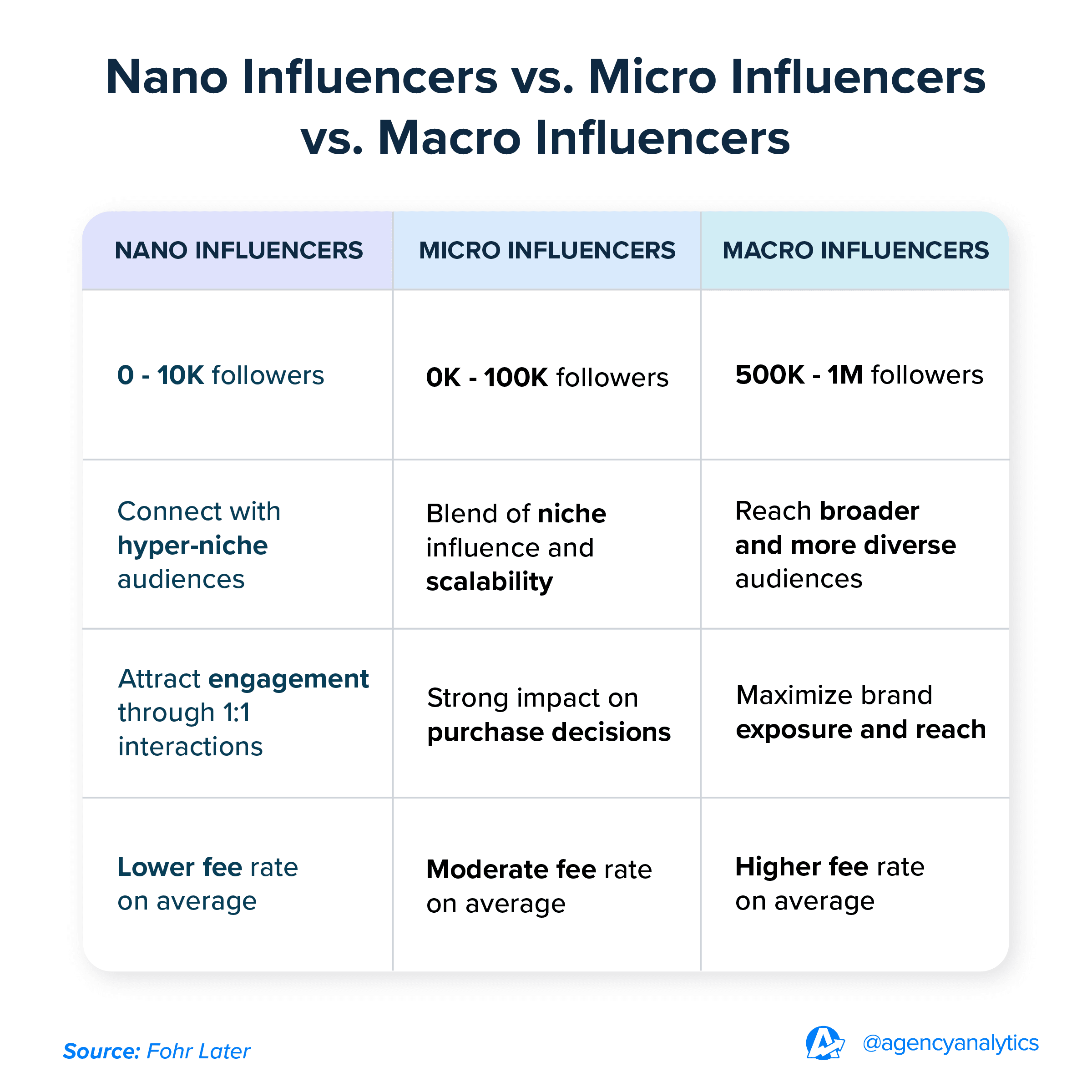
2. B2B Influencer Marketing Expansion, Especially on LinkedIn
B2B brands are finally catching up to their B2C counterparts in leveraging influencer marketing.
LinkedIn has seen success since launching short-form videos–more brands are using this feature to connect with decision-makers, thought leaders, industry experts, and niche business influencers.
So, what does this shift mean? Agencies managing B2B campaigns should rethink their influencer strategies beyond traditional social platforms like Instagram and TikTok.
3. Increased Prevalence Of AI-Generated Influencers
Love it or hate it, AI influencers are here for the foreseeable future. They're reshaping how brands think about partnerships, providing a futuristic (if surreal) twist to traditional influencer campaigns.
While human creators still dominate influencer marketing, AI-generated personalities like Aitana Lopez are carving out space in the industry.

Aitana Lopez, who has 350,000 followers on Instagram, is an AI-generated model and influencer. (Source: Instagram)
These virtual influencers give brands complete control over messaging, eliminating concerns about reputation risks or inconsistent branding.
While not a full replacement for real influencers, expect AI-driven influencer campaigns to become a more pronounced part of the marketing mix.
4. The Rise of Social Search and AI-Driven Discovery
The social media landscape is no longer just about entertainment—it’s becoming a search-first ecosystem.
More users (especially Gen Z) treat TikTok, Instagram, and YouTube like search engines. They’re looking for product recommendations, how-to guides, and reviews, seeking more in-depth information.
To stay ahead, agencies should optimize influencer content for discoverability and incorporate SEO-driven elements (e.g., captions, strategic hashtags, and keyword-rich video descriptions). This will increase the chances of ranking higher in platform search results.
AI-powered recommendations are also reshaping how content is surfaced. Social platforms use machine learning algorithms to prioritize content that aligns with user intent. That means agencies should focus on high-value, engagement-driven content, ensuring it feels authentic and relevant.
5. Increased Traction From Gen Z
Speaking of Gen Z, they’re leading the charge when it comes to purchase decisions based on influencer marketing.
This audience values authenticity, relatability, and unfiltered content over polished, brand-directed ads. Influencers who share raw, behind-the-scenes moments, real-life product experiences, and interactive content (like live Q&As or challenges) are likely to reach this audience segment.
For best results, ditch overly scripted content in favor of genuine, transparent, and community-driven partnerships. Agencies that get this right will capture higher engagement from Gen Z, in addition to stronger brand affinity and more conversions.
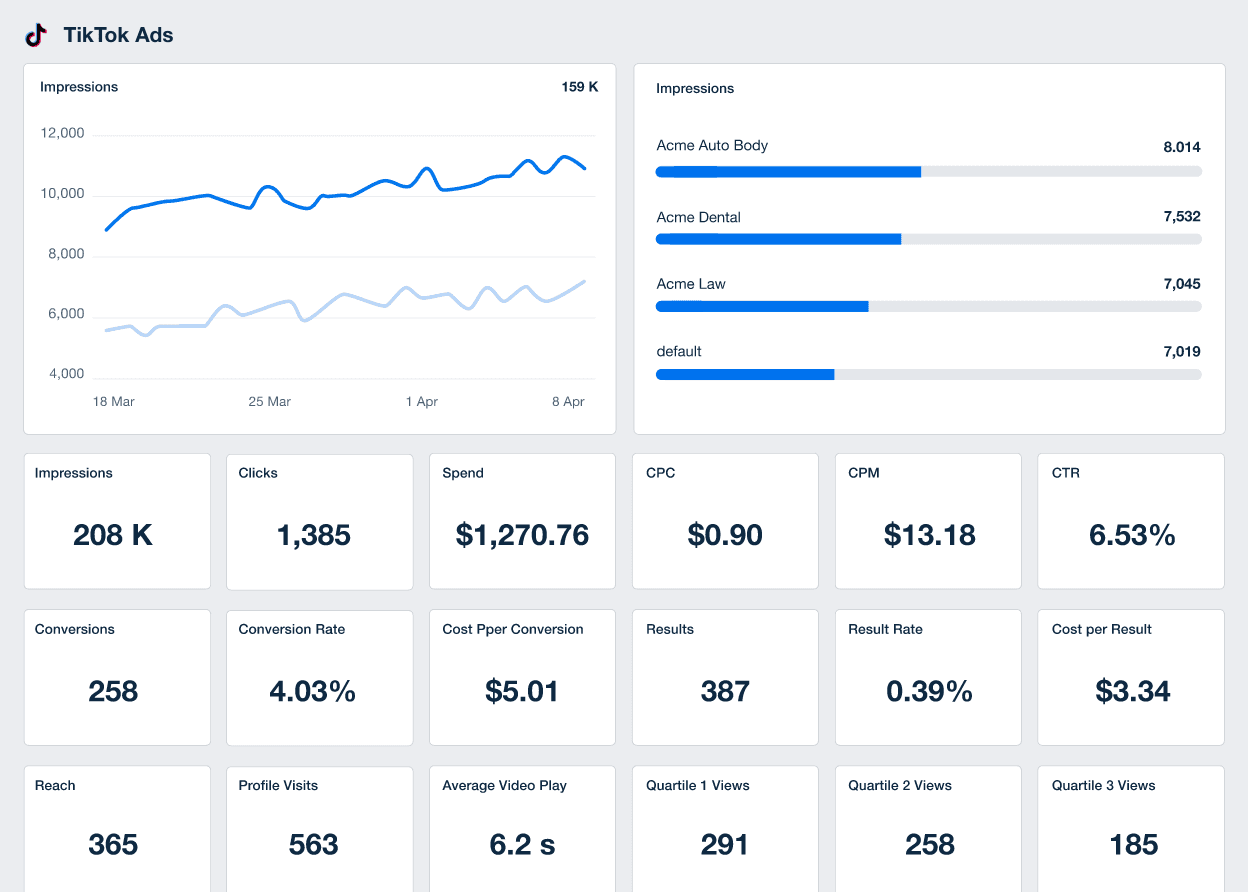
Compile your client’s TikTok Ads campaign data in less time than it takes to swipe through the latest #foryou posts. Try AgencyAnalytics free for 14 days!
6. Long-Term Influencer Partnerships Are Here To Stay
Transactional, one-off influencer campaigns are losing steam. In other words, expect more brands to transition from short-term sponsorships to ambassadorship models.
In 2025, agencies should focus on long-term collaborations that build deeper affinity and loyalty. When influencers consistently feature a brand in their content, their audience perceives it as a genuine part of their lifestyle rather than just another #ad.
7. IGC, UGC, and EGC FTW
Influencer-Generated Content (IGC), User-Generated Content (UGC), and Employee-Generated Content (EGC) are winning big this year. These content types make campaigns feel more relatable and less like traditional advertising.
As social search and AI-driven recommendations shape consumer behavior, agencies should prioritize content that feels organic and experience-based. More specifically:
IGC builds trust by featuring influencers who integrate products seamlessly into their daily lives.
UGC amplifies brand advocacy, with organic customer reviews and testimonials carrying more weight than ever.
EGC turns employees into brand storytellers, humanizing the company and making corporate messaging more relatable.
8. The Rise of Cross-Channel Campaigns
Single-platform campaigns are a thing of the past.
Now, an influencer campaign might start as a short-form TikTok, expand into a YouTube deep dive, and spark real-time discussions on X. This cross-pollination ensures a client’s message resonates with a broader audience, increasing overall reach.
However, here’s something to remember: Each platform plays a different role. For example, TikTok drives discovery, Instagram builds community, YouTube delivers long-form storytelling, and X fosters two-way conversations. So, agencies should create a unified strategy that adapts to each platform’s strengths while keeping the brand message consistent.
How To Measure Influencer Marketing Success
Measuring the success of an influencer campaign is a bit more complex (and subjective) than compiling straight traffic numbers, sales, and conversions.
Yes, sales and conversions make influencer marketing effective. However, unlike traditional ad platforms, there are typically several additional steps to track ROAS (Return on Ad Spend), including creating referral links, assigning discount codes, etc.
With these extra (and often manual) tasks, most influencer marketing campaigns are much more difficult to scale than PPC advertising.
As Stacey Steiner, Director of Brand Activation for Prattify, explains, subjective metrics also prove an agency’s influencer marketing campaign ROI.
I review the basics—impressions, engagement, and comments—but I also look at sentiment. Was the content easily relatable and digestible by the consumer? Was it presented in an authentic and approachable manner?
Stacey Steiner, Director of Brand Activation, Prattify
So, how does an agency track influencer marketing KPIs and metrics?
This is where a platform like AgencyAnalytics comes into play, providing a time-saving way to monitor metrics like sales, conversions, reach, engagement, and more. For example, imagine your agency is launching an influencer marketing campaign that includes ads on TikTok to increase sales on the client’s ecommerce website.
With AgencyAnalytics, create custom client-facing dashboards that display Shopify or Stripe data in real-time, right alongside TikTok Ads campaign performance.
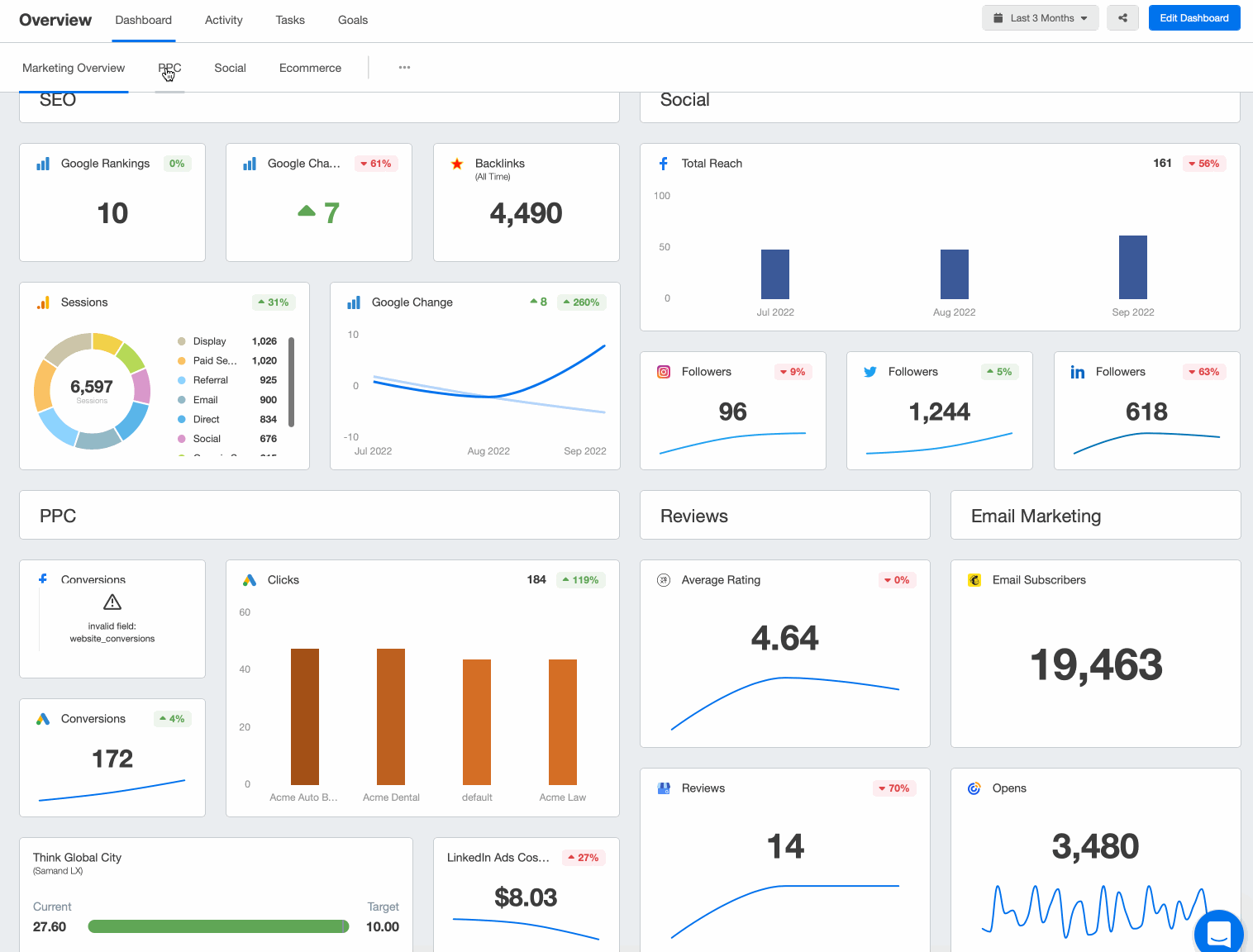
Make tracking influencer marketing success the easiest part of your day. Use a customizable AgencyAnalytics dashboard to see your campaign progress in a flash. Sign up for a free 14-day trial today!
Influencer Marketing Mistakes To Avoid
When wielded correctly, influencer marketing is powerful.
Agencies must be mindful of the pitfalls—like misaligned partnerships, lack of transparency, or an influencer going off-script and damaging a client’s reputation.
Here's a breakdown of what to avoid and how to solve these common challenges.
Undervaluing Micro-Influencers
Chasing big-name influencers might seem like the best move, but overlooking micro-influencers can be a costly mistake. Larger influencers may bring broad reach but less engagement and authenticity—while also demanding a higher price tag.
Agency Solution
Leverage micro-influencers for campaigns where trust and audience connection matter most. Their niche audiences are often more engaged, leading to stronger brand advocacy and better ROI. Prioritizing connection over sheer reach may result in more meaningful interactions.
Make sure you really understand the audience your client is trying to reach when you are selecting influencers. Not just the content, but look at who is commenting and engaging with the influencers to make sure their audience aligns.
Emily Carpenter, Director of Marketing, Digital Retail Partners
Failing To Maintain Authenticity and Transparency
Audiences can spot inauthenticity a mile away. Overly scripted influencer content or undisclosed sponsorships don’t just turn people off—they damage credibility. Consumers are gravitating toward content that feels real, not like a forced ad.
Agency Solution
Lean into Influencer-Generated Content (IGC), User-Generated Content (UGC), and Employee-Generated Content (EGC) to create more natural, trust-building campaigns. Encourage influencers to integrate products seamlessly into their daily lives, showcase real customer experiences, and tap into employee voices for insider perspectives.
Always disclose sponsorships transparently—genuine storytelling beats content that feels staged. Also, remember to balance AI-generated content with human-driven elements. That way, campaigns feel less robotic.
Mismatching Influencer Partnerships
Avoid partnering with influencers who don't share your client’s brand values or connect with their target audience. A tech guru promoting artisanal bakery goods won’t convince many to spring for that buttery croissant.
Agency Solution
Vet potential influencers thoroughly. Look beyond follower counts to their content style, audience demographics, and engagement quality. Ensure their brand persona complements your client’s to create a natural and believable partnership.
Our influencer selection is based on content alignment and consistency. We want as much exposure as possible, so follower and engagement metrics are important, but ultimately, we want positive impressions. We strive to create relationships with each influencer for years, not just campaign-to-campaign.
Stacey Steiner, Director of Brand Activation, Prattify
Choosing the Wrong Platform
Not every platform is the right fit for every campaign.
A misaligned strategy—like pushing highly visual content on X instead of Instagram or running B2B thought leadership campaigns on TikTok—could tank engagement.
Agency Solution
Go where the target audience is most engaged and where the content format fits naturally. Demographic targeting is just as important—consider age, interests, and behaviors when selecting platforms.
For example, LinkedIn and YouTube work well for B2B thought leadership. On the other hand, TikTok and Instagram excel in short-form storytelling for younger audiences. Match the message to the medium, ensuring campaigns aren’t lost in the wrong feed.
Failing To Define Clear Strategies
Launching campaigns without clear objectives and success metrics will lead to aimless and ineffective influencer collaborations.
Agency Solution
Develop a detailed strategy outlining the campaign goals, target audience, key messages, and desired outcomes. Use this blueprint to guide influencer collaborations, ensuring every post and interaction serves a purpose.
Setting clear expectations of what your client expects in return for what the influencer will receive is really important. It allows the influencer to focus their energies on the project rather than being self-conscious or lacking confidence about the exchange.
Stacey Steiner, Director of Brand Activation, Prattify
Relying on Outdated Trends
Recycling last year’s viral trends or relying solely on mega influencers can make campaigns feel outdated and out of touch. As AI-driven content creation rises and audiences shift toward niche influencers, brands need to evolve or risk getting left behind.
Agency Solution
Stay ahead by embracing AI-powered content tools, tapping into micro and nano influencers, and experimenting with emerging content formats.
Leverage AI for smarter trend analysis, but keep genuineness at the core—audiences engage most with content that feels real and relevant.
Final Thoughts: Influencer Marketing Is More Than a Fad
Influencer marketing is still one of the best ways for agencies to grow their clients’ reach in 2025—but the playbook has changed.
One-off sponsorships are losing steam, and long-term partnerships with niche influencers are delivering stronger engagement. AI-powered influencers are making waves, but human connection still drives trust. And if a campaign isn’t built for multiple platforms, it’s already falling behind.
The real wins come from smart partnerships—working with influencers who actually align with your client’s brand and create content their audience cares about. By keeping this focus in 2025, agencies will create influencer campaigns that generate buzz, drive real engagement, and build lasting brand loyalty.

Written by
Francois Marchand brings more than 20 years of experience in marketing, journalism, and content production. His goal is to equip agency leaders with innovative strategies and actionable advice to succeed in digital marketing, SaaS, and ecommerce.
Read more posts by Francois MarchandSee how 7,000+ marketing agencies help clients win
Free 14-day trial. No credit card required.



